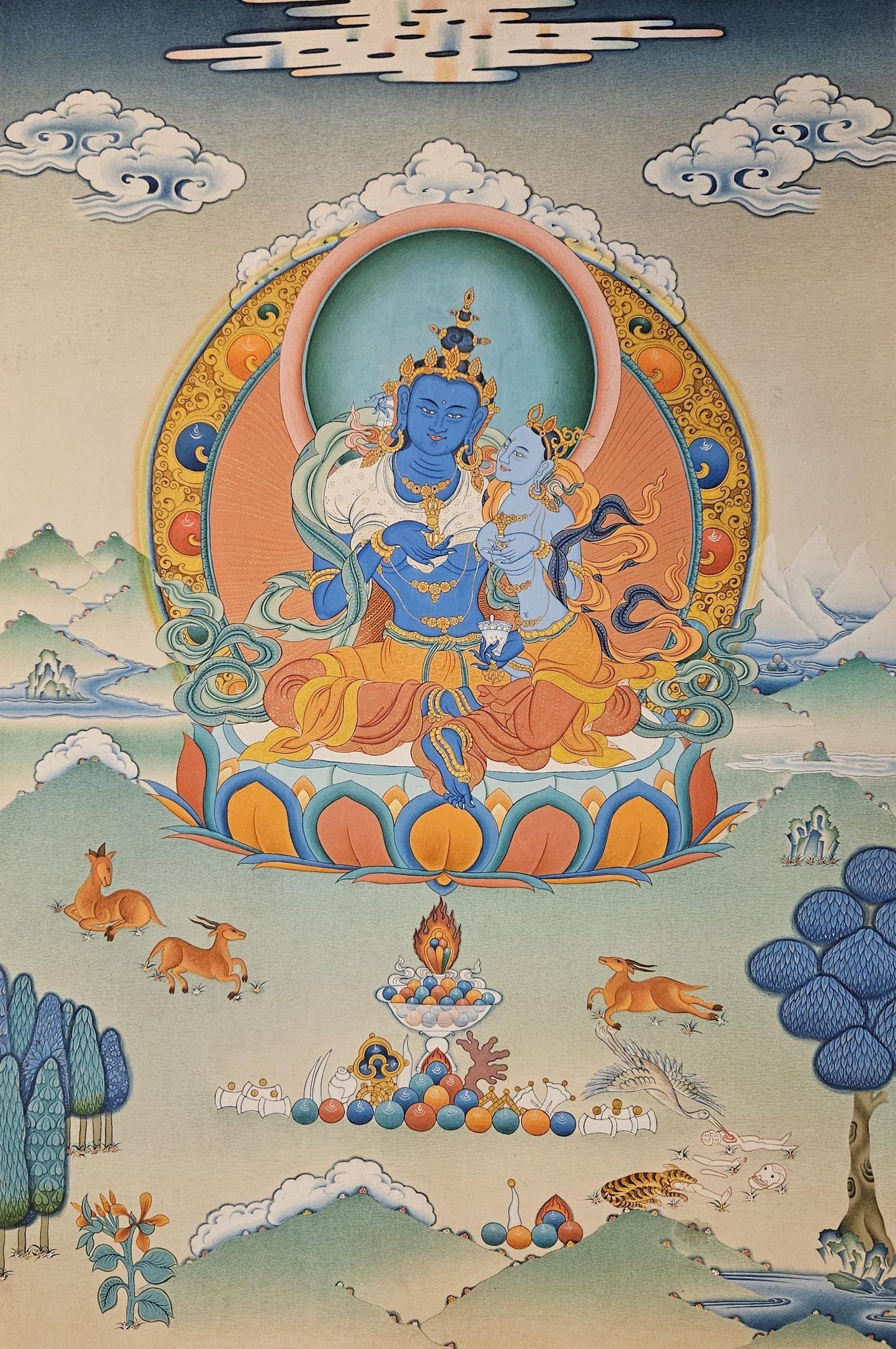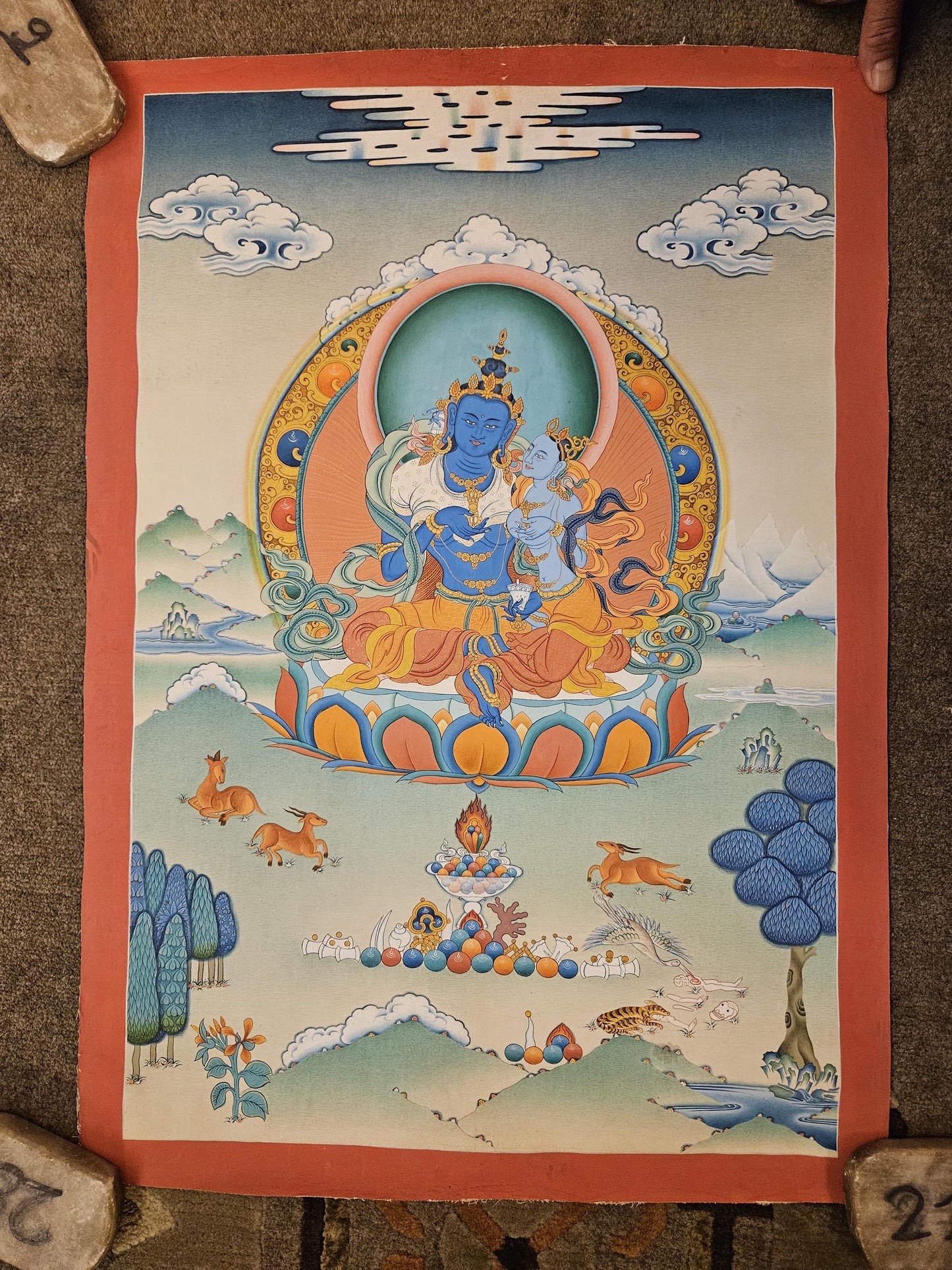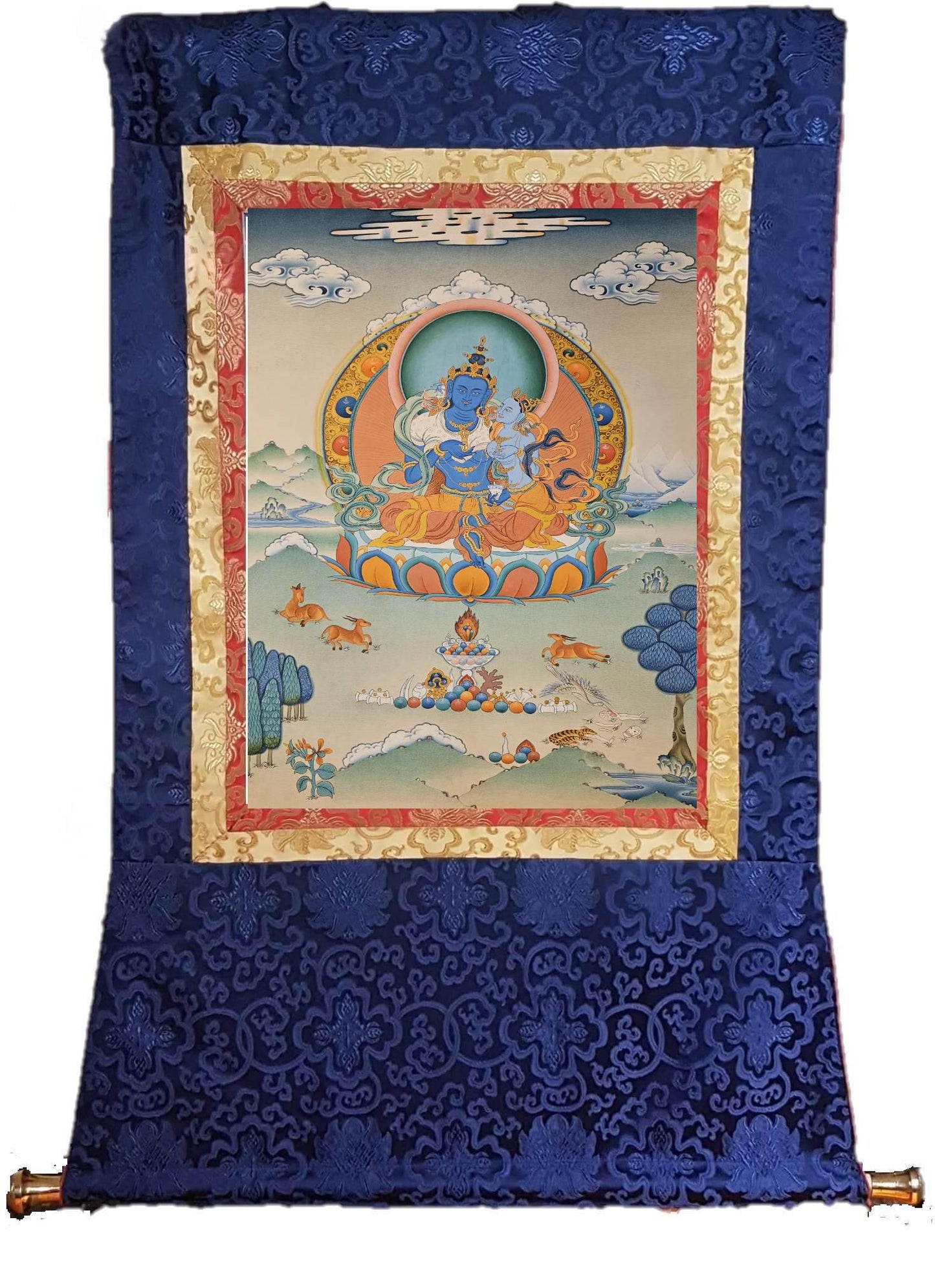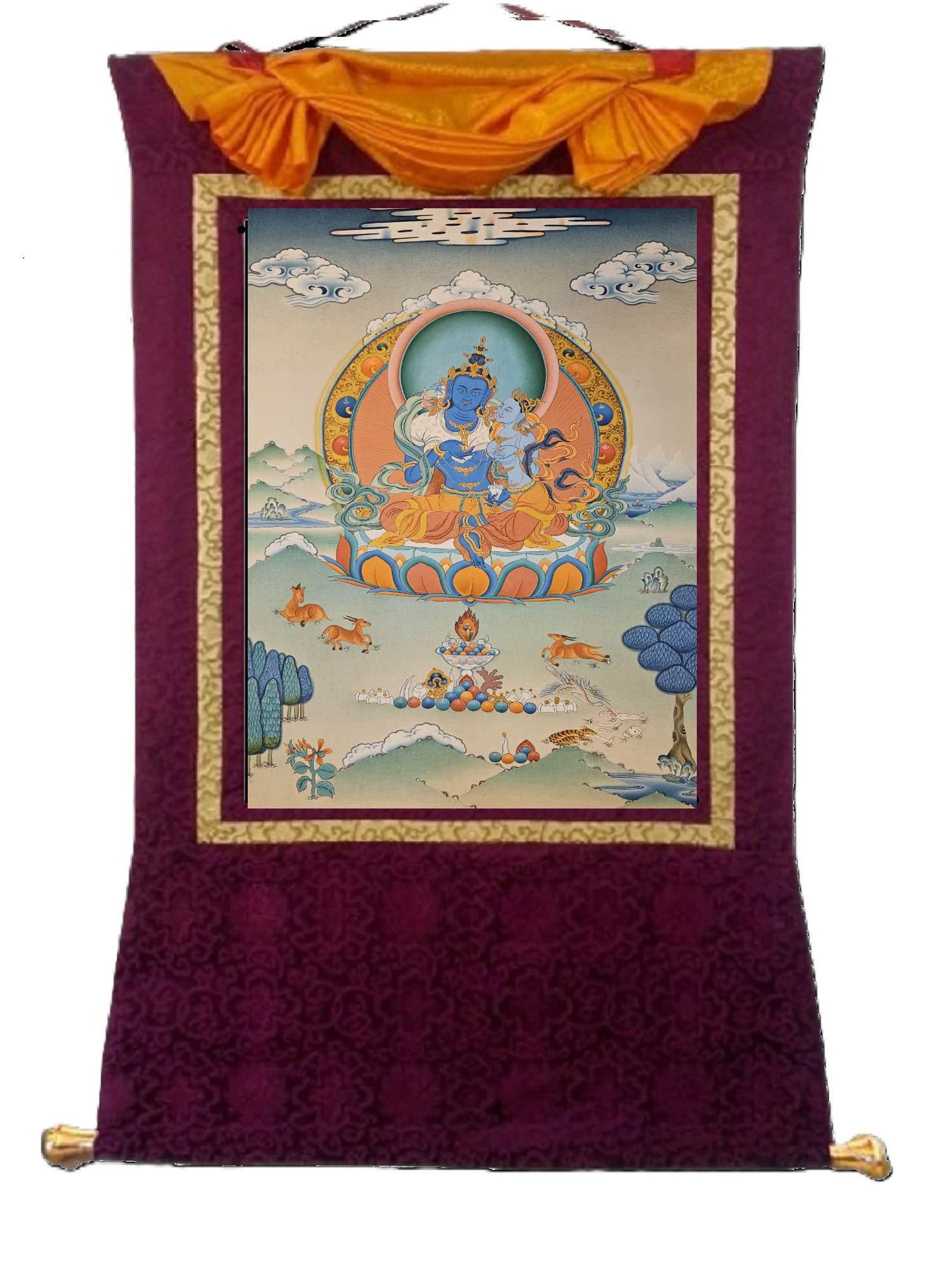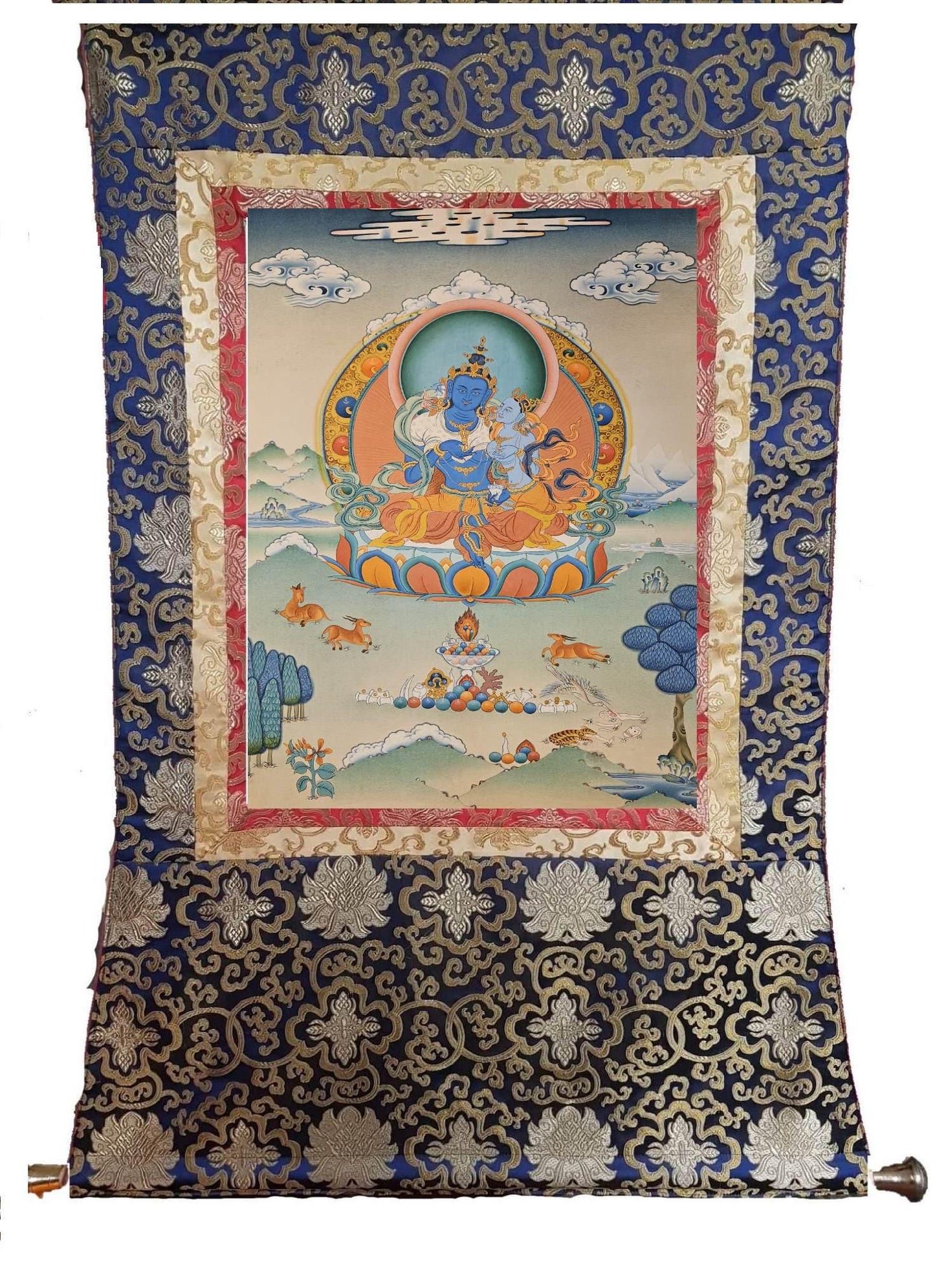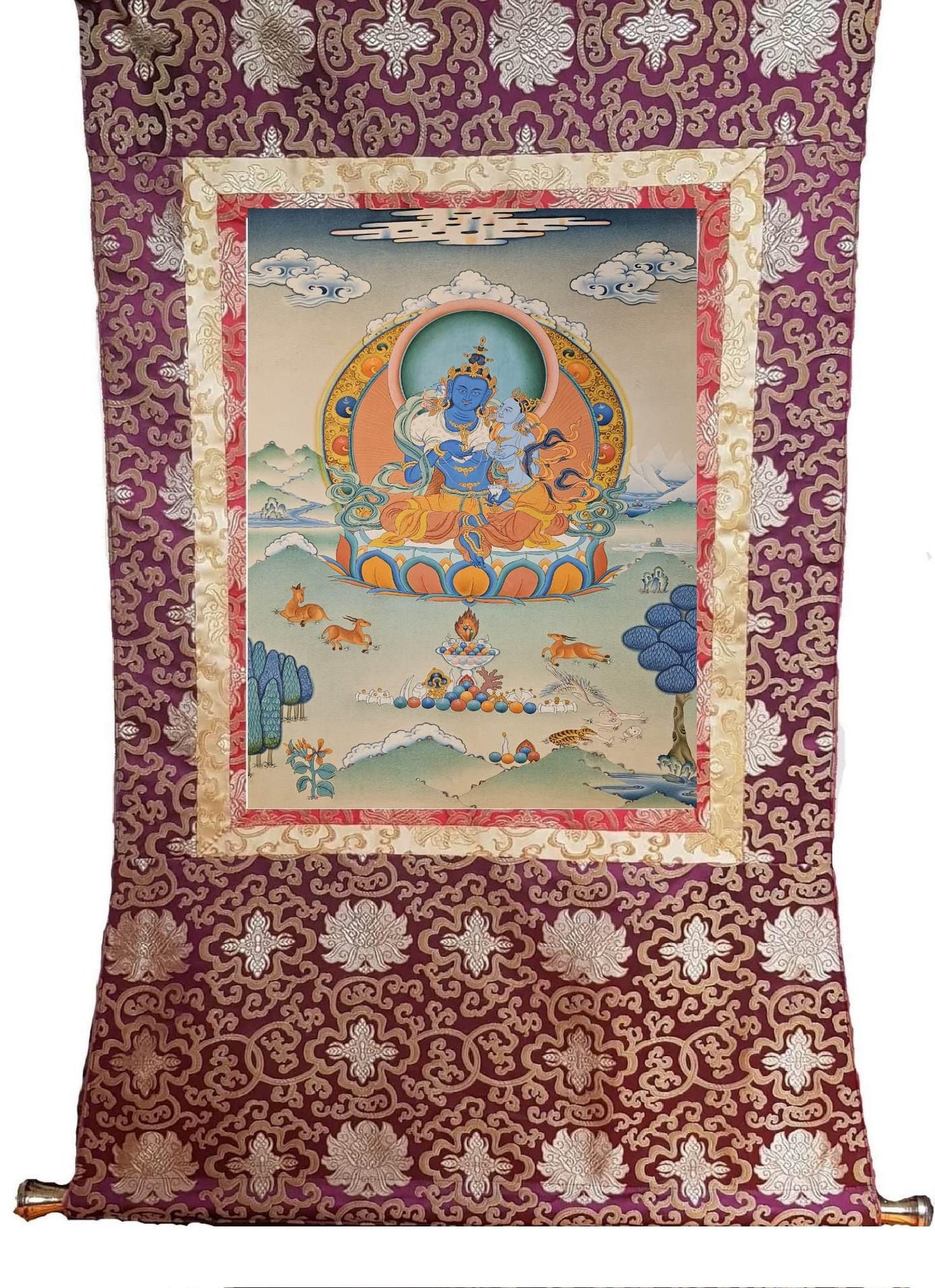1
/
of
6
My Store
129. Dorje Chang Vajradhara Consort Thangka (Thanka). Free Brocade / Free Shipping.
129. Dorje Chang Vajradhara Consort Thangka (Thanka). Free Brocade / Free Shipping.
Regular price
$600.00 USD
Regular price
Sale price
$600.00 USD
Quantity
Couldn't load pickup availability
Vajradhara Consort
Vajradhara is the primordial buddha, the dharmakaya buddha. Vajradhara, depicted as dark blue in color, expresses the quintessence of buddhahood itself. Vajradhara represents the essence of the historical Buddha’s realization of enlightenment.
Historically, Prince Siddhartha attained enlightenment under the bodhi tree in Bodhgaya over 2500 years ago and then manifested as the Buddha. According to Buddhist cosmology, he was the Fourth Historic Buddha of this fortunate eon. Prince Siddhartha’s achievement of enlightenment, the realization, or wisdom of enlightenment itself, is called the dharmakaya, the body of truth. When he expresses that realization through subtle symbols, his realization is called the sambhogakaya, the body of enjoyment. When such realization manifested in more accessible or physical form for all sentient beings as the historical Shakyamuni Buddha, it is called the nirmanakaya, the body of manifestation.
The dharmakaya, synonymous with Vajradhara Buddha, is the source of all the manifestations of enlightenment. Vajradhara is central to the Kagyu lineage because Tilopa received the vajrayana teachings directly from Vajradhara, the dharmakaya buddha. Thus, the Kagyu lineage originated from the very nature of buddhahood.
In many Buddhist schools, especially in the four Tibetan schools of Buddhism, they consider Vajradhara to be the dharmakaya and the origin of these schools. He is the realization of the “ultimate state of enlightenment”. He does not judge, does not discriminate, and is supposed to benefit all beings. As stated earlier, there is much debate and confusion between Buddhist schools as to whether it is Vajradhara or Samanabhadra who is the Adi Buddha. The main difference between the two lies in the thangka paintings and sculptures that each is represented in. Focusing on Vajradhara, we see that he is typically adorned with ornaments and garments which symbolize his “capacity to ceaselessly benefit and fulfill the needs of all living beings through the means of sambhogakaya and nirmanakaya emanations” (kagyu). A good way of understanding Vajradhara is using the Sun as a metaphor for him. On Earth, we receive the light from the sun and not the sun itself. Thus, we do not receive Vajradhara on Earth, however, we can see the emanation of Vajradhara represented by Shakyamuni Buddha. Shakyamuni Buddha is said to be a karmic manifestation or emanation of enlightenment.
In the Buddhist world, some believe that there is no physical form to Vajradhara, and that he is more of a being who exists in a heavenly realm and that he is beyond conception. If this is the case, then why do we see him depicted in human form? Some speculate that the paintings and sculptures of Vajradhara are simply there to help students understand his enlightened aspect. He is portrayed as dark blue, often times with a bell and vajra which symbolizes his indestructibility. In the following pictures, you will see Vajradhara in such positions as the diamond mudra, and also the meditation mudra.
Vajradhara is the highest deity of the Buddhist Pantheon. The Buddhist Pantheon is considered to be the supreme essence of all Buddha’s. Vajradhara can be depicted in two forms. The first form is the single form. When Vajradhara is represented this way he is adorned with fancy clothing, jewelry, and ornaments. The single Vajradhara is sitting in meditations with a bell (ghanta) in his left hand and the vajra in his right hand. His hands are then crossed in the diamond position, in front of his heart. The second form, yabyum, is essentially the same as the single form, but his Saki locks Vajradhara in a close embrace. His body is thought to be invisible from all Buddha’s, however it is obvious that he contains the noble look of a Bodhisattva—this being a crown, ornaments, and seated in the diamond position.
To be in the diamond mudra, one must bring their hands up to chest level, palms touch palms, and fingers touching fingers. We can see that the hands are crossed, and the right thumb is covering the left thumb. In Buddhist culture, the crossing of the two hands represents to co-existence of the two worlds, the Diamond world and the matrix world. The two worlds describe the two aspects of the one cosmic world. Also, the diamond world is about adapting to the traditional Karma Kagyu to fit in the western culture. It deals with elimination unattainable or unnecessary Tibetan ways, while maintaining the strong tradition, culture, and structure of Buddhism. This mudra is understood as a gesture of adoration (or giving homage) to a superior. One way to use this mudra is for veneration when the hands are held at face level.
Size:
Size without Brocade: 16 inches by 24 inches
Shipping:
We ship within 2 business day.
DHL Shipping: 5 to 8 business days with tracking number.
Insurance against loss.
We do wholesale too.
Our one and only priority in this business is to provide "Hassle free Customer Satisfaction". We have "Quality Products" with "Cheapest Price" in the market.
Please contact us to resolve any issues. Contact us via email before leaving any negative or neutral comments. We promise you that we will resolve any issues.
Please confirm the return address with us before returning the product.
Share
